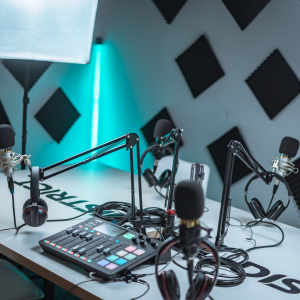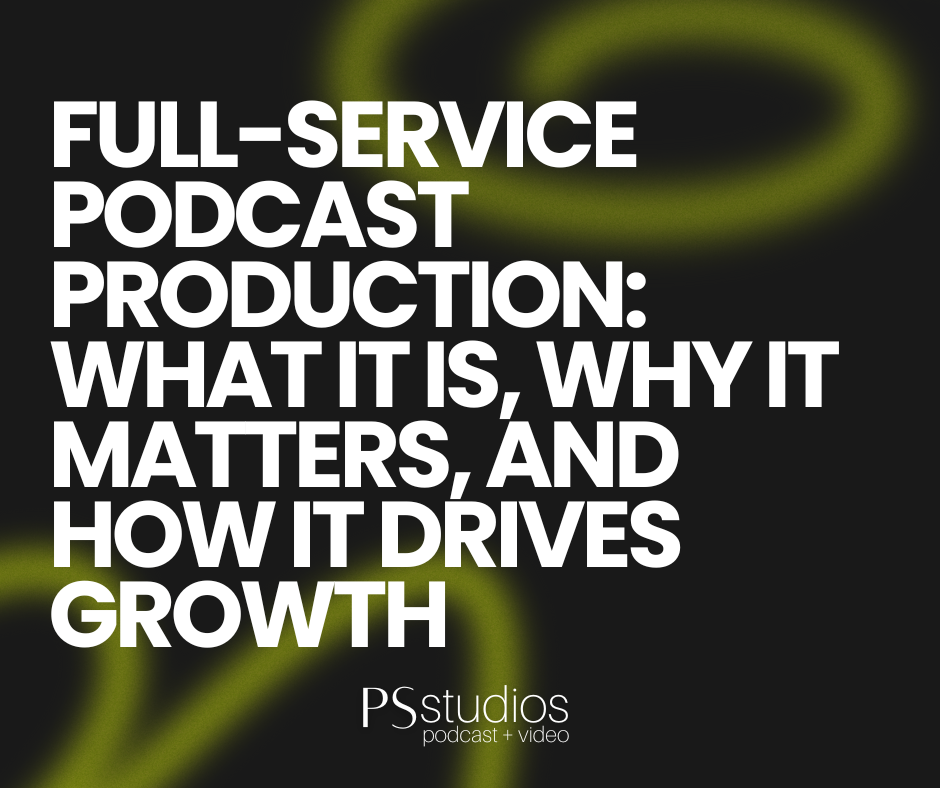
Should A Podcast Be Live Or Pre-Recorded?
In the ever-expanding world of podcasting, content creators often grapple with a crucial decision: whether to conduct their podcasts as live broadcasts or pre-recorded episodes. This choice carries significant implications for the podcast’s production process, audience engagement, and overall effectiveness. In this blog post, we’ll explore the advantages and drawbacks of both live and pre-recorded podcast formats, helping you decide which approach aligns best with your podcasting goals and style.
Live Podcasting: The Thrill of Real-Time Interaction
Live podcasting involves recording episodes in real-time, allowing immediate interaction with your audience.
Here are some compelling reasons to consider going live:
- Real-Time Engagement: Live podcasts enable direct interaction with your audience through live chat, comments, and social media. Listeners can ask questions, share their thoughts, and feel like an active part of the show, creating a sense of community.
- Authenticity: Live episodes capture genuine reactions, unscripted moments, and unfiltered emotions. This authenticity can resonate with listeners and foster a more intimate connection between the host(s) and the audience.
- Sense of Urgency: Live broadcasts often create a sense of urgency, encouraging listeners to tune in at the scheduled time to catch the episode as it unfolds. This can lead to higher live viewership and engagement.
- Immediate Feedback: Live podcasting allows hosts to receive immediate feedback on their content, which can be invaluable for refining future episodes and addressing listener concerns in real-time.
Drawbacks of Live Podcasting:
- Technical Challenges: Live broadcasts can be prone to technical glitches, such as connectivity issues, audio problems, or unexpected interruptions. Hosts must be prepared to handle these challenges on-air.
- Time Constraints: Scheduling live episodes at specific times may not always align with the availability of hosts and guests. This can limit flexibility and potentially exclude a portion of your audience.
- Pressure to Perform: The live format can create pressure to deliver a flawless performance, which may lead to nervousness or mistakes during the recording.
Pre-Recorded Podcasting: Polished and Planned
Pre-recorded podcasts involve recording episodes in advance, often with meticulous planning and editing.
Let’s explore the advantages of this format:
- High-Quality Production: Pre-recorded podcasts can be meticulously edited and polished to ensure high-quality audio, minimal errors, and a seamless listening experience.
- Flexibility: Creators have the flexibility to record episodes at their convenience, making it easier to accommodate guest schedules and produce content without time constraints.
- Content Consistency: Pre-recorded episodes offer greater control over the content’s consistency and quality, allowing for structured storytelling, research, and script preparation.
- Time Efficiency: Pre-recording saves time during the production process, as creators can efficiently record multiple episodes in a single session.
Drawbacks of Pre-Recorded Podcasting:
- Limited Real-Time Interaction: Pre-recorded episodes lack the immediate interaction and audience engagement that live broadcasts offer. Listeners may miss the opportunity to engage with hosts in real-time.
- Less Authenticity: While pre-recorded episodes can be well-crafted, they may lack the spontaneity and raw authenticity of live broadcasts.
- Scheduling Challenges: The convenience of pre-recording can lead to sporadic release schedules if not managed consistently.
The Decision: Live or Pre-Recorded?
Ultimately, the choice between live and pre-recorded podcasting depends on your goals, style, and audience preferences. Some creators thrive in the live format, valuing the real-time connection with listeners and the authenticity it provides. Others prefer the controlled and polished nature of pre-recorded episodes, which allow for meticulous editing and a more structured approach.
Consider factors such as your technical proficiency, scheduling constraints, desire for immediate audience interaction, and the specific content of your podcast. It’s also worth experimenting with both formats to see which resonates best with your audience and aligns with your podcasting objectives.
There is no one-size-fits-all answer to whether a podcast should be live or pre-recorded. Each format has its merits and drawbacks, and the decision should be guided by your unique vision for your podcast and the experience you want to offer to your listeners. Whether you choose the thrill of live interaction or the precision of pre-recorded production, the world of podcasting awaits your creative voice.



